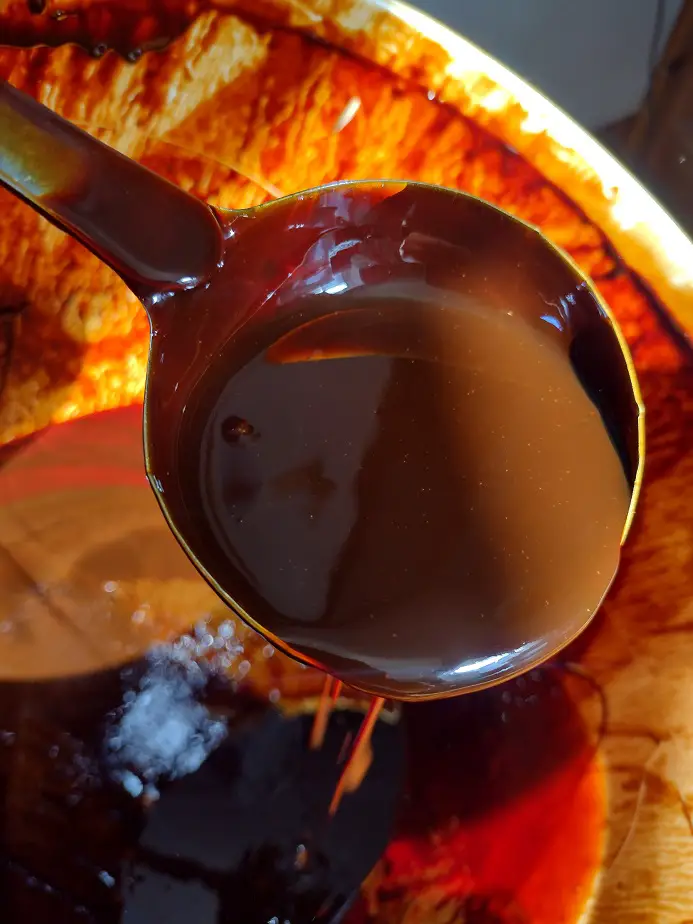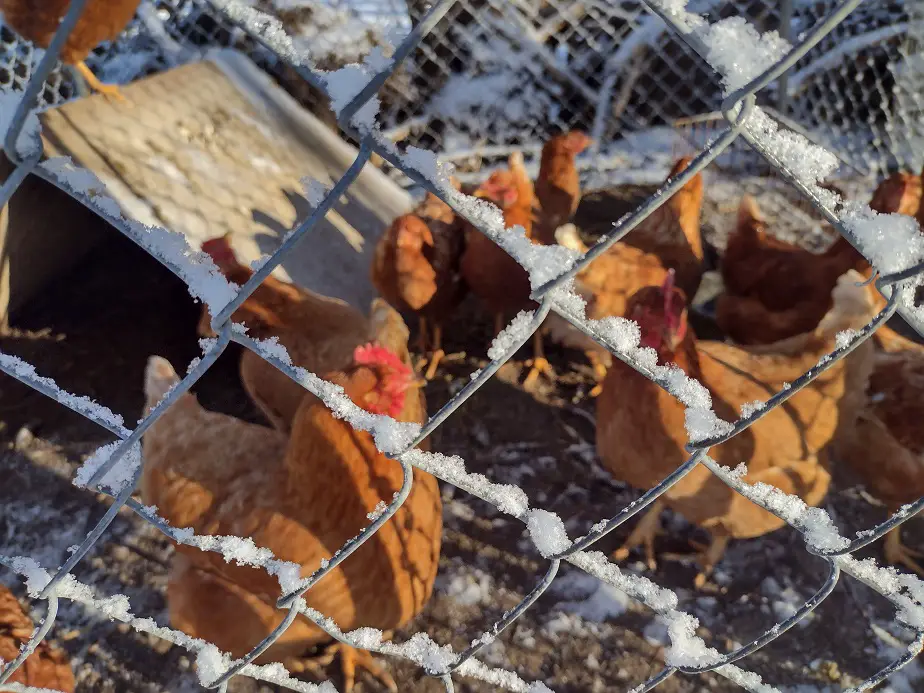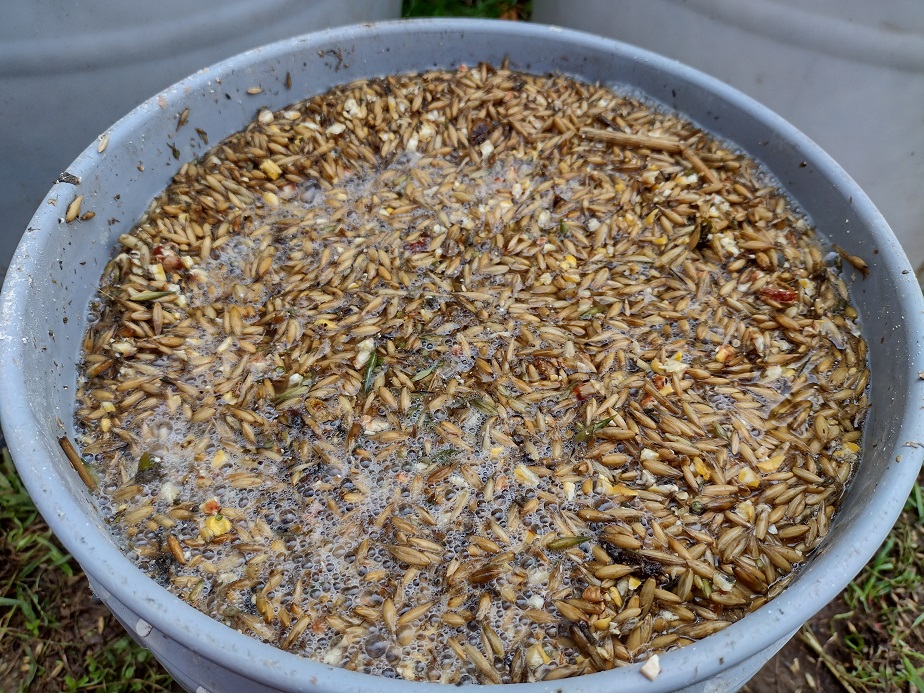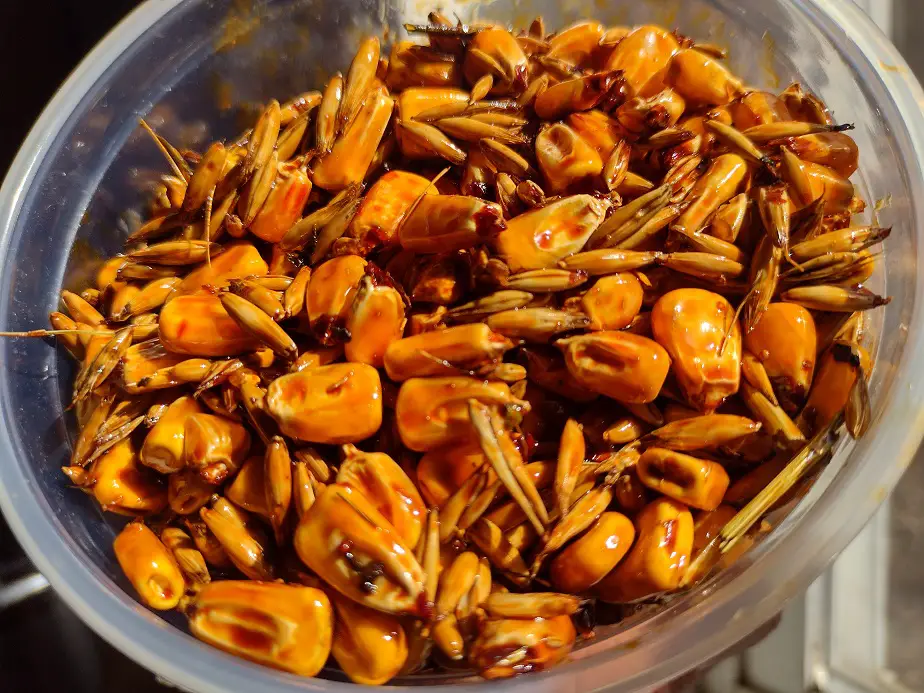I guarantee you that I have tried every cheep feed option I could think of.
Chickens can eat sweet feed and it especially compliments a free-range diet. But, chickens raised on sweet feed tend to become quite fat and won’t lay many eggs. Sweet feed is low in lysine and calcium for chickens. Some of it has no added vitamins either. Sweet feed is a poor primary feed for chickens.
Now, it can be used and used well; if you are smart with it.
Feeding Sweet Feed to Chickens
Sweet feed, which is either grain or pelleted feed with molasses. Molasses adds mostly a little energy, calcium, and magnesium. And, a bit of vitamin B6. Molasses actually contains several hundred fewer calories per pound than corn, believe it or not.
But, when it’s added to grain, molasses adds some calories by filling in voids between the grain. The calories per pound of sweet feed is less than dry grain, but the calories per gallon is increased.
Molasses also change the energy structure of a feed. With it being about 50 percent sugar, it’s very quickly fermented in the gut of animals and rapidly absorbed. That has a tendency to change the metabolic process a bit in the animal, similar to how it does in people.

By adding sugar, we’re making a feed that is rapidly digested and metabolized during times of hard work and exercise, but we’re also making a feed that the body wants to convert into extra fat during times of less physical exertion.
Folks say that molasses adds calcium to a feed. Well, that’s true, but it doesn’t have nearly as much as what laying hens should get in a day. Hens usually need 4 grams of calcium a day in about 1/2 cup of feed. 1 tablespoon of molasses (a lot for a hen) has less than half a gram of calcium.
It’s not enough to make much of a difference if any at all. Sweet feed is also usually low-protein. Most mixes are 12% protein and 1% lysine if they contain pellets and 8% protein (0.35% lysine if just a sweet grain). Laying hens produce best with a 16 percent protein and a minimum of around 1% lysine.
So, it’s not at all an optimal feed by itself for laying hens. Meat birds require even more protein, and a similar mineral content to laying hens. If you fed chickens a regular sweet feed only, they would lay few eggs, grow poorly, and get fat.

How I Give Sweet Feed to My Chickens
I do feed my laying hens a sweet feed in winter, when they’re not laying eggs for the season. We actually mix it ourselves. I have a special recipe that ups the digestibility, nutrition, and protein content.
I once used store-bought, cheap sweet feed. That kept them fed but my hens didn’t produce well at all. At the time, my chickens had been free-range only and the sweet feed did increase their energy. I was a poor country boy who couldn’t afford chicken feed.
My chickens were happy and cost-free, but produced comparatively few eggs for the size of flock I had. After I gave them a little sweet feed, they had an increase enough in egg laying to make it worthwhile.

Now, I make my own sweet feed for winter use. It’s actually quite awesome and easy to make. Here’s how we do it.
I buy bags of corn and oats from my local farmer. We mix them together in roughly even amounts in a 5-gallon bucket, filling the bucket 2/3 full, add 2 cups of crushed biochar, then add water until full. I put a lid on, without a rubber seal, and keep it at room temperature for 48-72 hours until it ferments.
Drain off the liquid, add 3-4 cups fo agricultural molasses (we buy it cheap at out local feed mill), and mix it up. The result is a super-digestable, high-protein feed that will really help my birds keep warm in winter.
That’s actually a powerhouse of a winter feed for our birds up here in Michigan. But, I have to switch off by the end of April so they can start laying good eggs through October again.
Related Articles:

